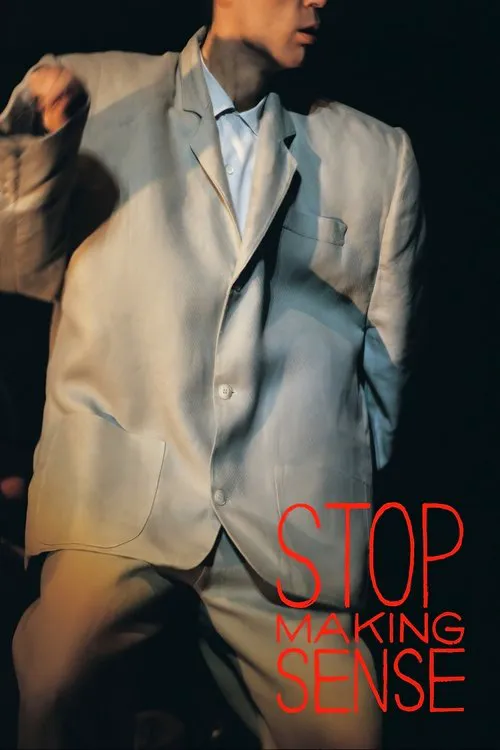Stop Making Sense

Plot
The iconic Talking Heads concert film, Stop Making Sense, catapults the audience into a mesmerizing world of sound and visuals as it captures the band's electrifying performance on their 1983 Speaking in Tongues tour. Directed by Jonathan Demme, the film masterfully weaves together a tapestry of creativity, musicianship, and energy as David Byrne, Tina Weymouth, Chris Frantz, and Jerry Harrison share the stage with an impressive array of guest musicians. The film opens with David Byrne, the band's enigmatic frontman, emerging alone on stage. His striking appearance in a suit and tie, complete with a microphone attached to his shoulder, sets the tone for the visually stunning performance that unfolds. The audience is initially drawn to Byrne's charismatic presence, and as he begins to sing the opening lyrics of "Psycho Killer," it becomes clear that this is going to be a unique experience. As the band members join Byrne on stage, the dynamic shifts from a solo performance to a finely-tuned ensemble. The chemistry between the musicians is palpable, and their individual talents blend together in a seamless fusion of sound and energy. The camera work, courtesy of Jonathan Demme and his team, is equally impressive, capturing the band's every move with a combination of close-ups, wide shots, and innovative camera angles. One of the standout features of Stop Making Sense is its use of creative choreography. Inspired by David Byrne's passion for dance, the film features an array of inventive movements and routines that add an extra layer of visual interest to the performance. The band members often find themselves dancing across the stage, their limbs flailing in time with the music as they create a sense of abandon and joy. This choreographed chaos is a hallmark of the Talking Heads' live shows, and Demme's film captures it beautifully. As the concert progresses, the band is joined by a series of guest musicians who add to the sonic tapestry. This includes Bernie Worrell, the iconic keyboardist who had previously worked with James Brown, and Adrian Belew, a guitarist who would later join the band. This expanded lineup allows the band to explore new textures and sounds, creating a sense of depth and richness that elevates the performance to new heights. The film's second half is notable for its inclusion of songs from the band's earlier work. By incorporating tracks from their debut album, 77, as well as hits like "Crosseyed and Painless" and "Once in a Lifetime," Stop Making Sense offers a comprehensive survey of the band's career. This retrospective approach adds context to the band's growth and development, highlighting their ability to evolve and adapt while remaining true to their artistic vision. One of the highlights of the film is its use of visual effects. The band's music is perfectly complemented by a series of innovative visuals, which include animated sequences, projections, and carefully constructed sets. These elements add a touch of fantasy to the performance, transporting the audience to a world where the boundaries between music, dance, and art blend seamlessly. Ultimately, Stop Making Sense is more than just a concert film – it's a celebration of creativity and collaboration. The film captures the essence of the Talking Heads' live shows, showcasing their unique blend of music, dance, and visual artistry. By weaving together a tapestry of sound and visuals, Demme has created a work of art that continues to inspire and entertain audiences to this day. As a testament to the band's enduring legacy, Stop Making Sense remains a must-see for anyone interested in music, film, or the creative process.
Reviews
Recommendations




